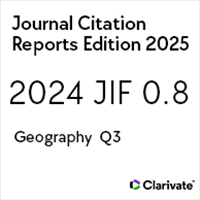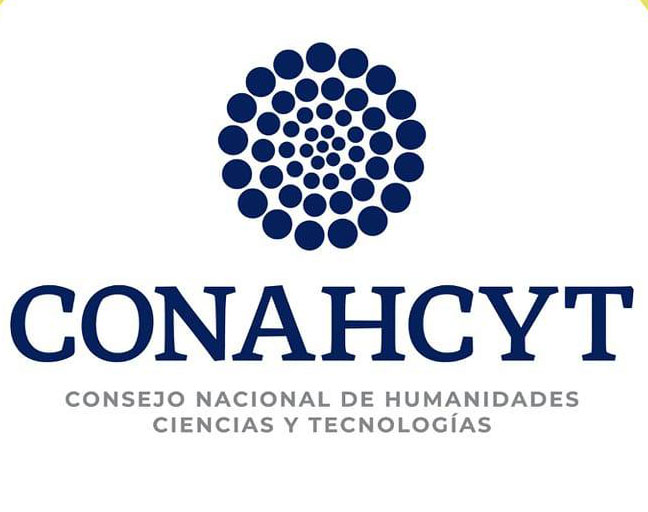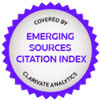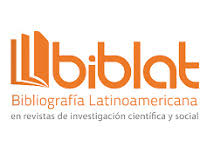Nostalgia por la tierra, nostalgia por el dolar: Guatemalan transnational lives and ideology of return migration
Nostalgia por la tierra, nostalgia por el dolar: Guatemalan transnational lives and ideology of return migration
https://doi.org/10.21670/ref.2001.04.a03
Palabras clave:
Migrantes guatemaltecos, ideología, procesos y patrones durante la migraciónResumen
Este escrito es un estudio acerca de la ideología de retorno existente en los migrantes guatemaltecos que actualmente viven y trabajan en la ciudad de Phoenix, ubicada en la zona suroeste del desierto de Arizona, en los Estados Unidos. En el área metropolitana de Phoenix, los guatemaltecos —tanto del grupo ladino como del grupo maya— se suman al mosaico cultural de la ciudad, y al mismo tiempo son agentes de cambio vitales de la comunidad guatemalteca a la cual pertenecen. Muy poco se sabe acerca de los procesos y patrones que hay detrás de la migración de los habitantes de Guatemala hacia los Estados Unidos, a pesar de que 10% de la población de aquel país reside actualmente en la unión americana. La mayoría de los guatemaltecos que viven en Phoenix, independientemente del tiempo que tienen residiendo en los Estados Unidos, expresan un profundo deseo de regresar a su lugar de origen. Parte de este fuerte sentimiento de retorno prevalece debido a que la comunidad guatemalteca del área metropolitana de Phoenix no se encuentra unida.Abstract This paper addresses the ideology of return among contemporary Guatemalan migrants living and working in the southwestern desert city of Phoenix in Arizona. In Phoenix’s metropolitan area, Guatemalans (both Ladino and Maya ethnic groups) add to the city’s cultural mosaic, and at the same time, are vital agents for change in Guatemalan society. Little is known about the processes and patterns behind Guatemalan migration despite the fact that over 10 percent of Guatemala’s population currently resides in the United States. Most Guatemalans in Phoenix, regardless of their length of residence in the United States, express longings for return to their homeland. In part, this strong notion of return prevails because the Guatemalan community in the Phoenix metropolitan area is not cohesive.
Citas
Anwar, Muhammad (1979). The Myth of Return: Pakistanis in Britain. Heinemann: London.
Appadurai, A. (1990). Disjuncture and difference in the global economy. Public Culture, 2(2):1-24. DOI: https://doi.org/10.1215/08992363-2-2-1
Appadurai, A. and C. Breckenridge (1988). Why public culture. Public Culture, 1(1):5-9. DOI: https://doi.org/10.1215/08992363-1-1-5
AVANCSO (1991). Vonós a la Capital: Estudio Sobre la Emigración Rural Reciente en Guatemala, No.7.
Barreras, Manuel (1999). Director of the Guatemalan Unity Information Agency. Personal communication.
Basch, Linda, Nina Glick Schiller, and Cristina Szanton Blanc (1994). Nations Unbound: Transnational Projects Postcolonial Predicaments and Deterritorialized Nation-States. Gordon and Breach: Langhorne, PA.
Bhabha, H. (1990). Dissemination: Time, narrative and the margins of the modern nation. Nation and Narration, edited by H. Bhabha. Routledge: New York. Pp. 291-322.
Bracamonte, Jose (1990). “Newly legalized immigrants’ impact on social services and the economy in the state of Arizona”.
Arizona State University, Dept. of Archives and Manuscripts, University Libraries: Tempe.
Bretell, C. (1979). “Emigrar para voltar: a Portuguese ideology of return migration”. Pap. Anthropology, 20(1):1-20.
Chaney, Elsa (1979). “The world economy and contemporary migration”. International Migration Review, 13:204-212. DOI: https://doi.org/10.1177/019791837901300201
Chávez, Leo (1994). The power of the imagined community: The settlement of undocumented Mexicans and Central Americans in the United States. American Anthropologist, 96(1):52-73. DOI: https://doi.org/10.1525/aa.1994.96.1.02a00030
Chávez, Leo, Allan Hubbell, Shirz Mishra, and R. Burciaga Valdez (1997). Undocumented latina immigrants in Orange County, California: A comparative analysis. International Migration Review, 31(1): 88–107. DOI: https://doi.org/10.1177/019791839703100105
Clifford, James (1992). Routes. Harvard University Press: Cambridge.
Cornelius, Wayne (1982). “Interviewing undocumented immigrants: Methodological reflections based on fieldwork in Mexico and the United States”. International Migration Review, 16:378-411. DOI: https://doi.org/10.1177/019791838201600206
(1990). Los migrantes de la crisis: El nuevo perfíl de la migración de mano de obra mexicana a California en los años ochenta. Población y Trabajo en Contextos Regionales, ed. Gail Mummert. El Colegio de Michoacán: Zamora. Pp. 103-41.
D’Innocenzo, Michael and Sirefman, Josef, eds. (1992). Immigration and Ethnicity: American Society- “Melting Pot” or “Salad Bowl”? Greenwood Press: Westport, Conn.
Fernandez, Celestino, and Lawrence Pedroza (1981). “The border patrol and news media coverage of undocumented Mexican immigrants during the 1970s: A quantitative content analysis in the sociology of knowledge”. University of Arizona,
Mexican-American Studies and Research Center: Tucson.
Georges, Eugenia (1990). The Making of a Transnational Community: Migration, Development, and Cultural Change in the Dominican Republic. Columbia University Press: New York.
González, Nancie (1961). Family organization in five types of migratory wage labor. American Anthropologist, 63:1264–80. DOI: https://doi.org/10.1525/aa.1961.63.6.02a00070
Gmelch, George (1980). “Return Migration”. Annual Review Anthropology, 9:135-159. DOI: https://doi.org/10.1146/annurev.an.09.100180.001031
Glick Shiller, Nina, Basch, Linda and Blanc-Szanton, Cristina (1992). “Transnationalism: A new analytic framework for
understanding migration”. Towards a Transnational Perspective on Migration::Race, Class, Ethnicity, and Nationalism Reconsidered. Annals of the New York Academy of Sciences, 645:1-24.
(1995). “From immigrant to transmigrant: Theorizing transnational migration”. Anthropological Quarterly, 68(1):48-63. DOI: https://doi.org/10.2307/3317464
Guarnizo, Luis (1997a). The emergence of a transnational social formation and the mirage of return migration among Dominican transmigrants. Identities, 4(2):281-322. DOI: https://doi.org/10.1080/1070289X.1997.9962591
(1997b). Going home:’ Class, gender and household transformation among dominican return migrants. Caribbean
Circuits: New Directions in the Study of Caribbean Migration, edited by Patricia Pessar. Center for Migration Studies: New York.
Guarnizo, Luis and Michael Peter Smith (1998). The locations of transnationalism. Transnationalism from Below, edited by M.P. Smith and L. Guarnizo. Comparative Urban & Community Research. vol. 6, M.P. Smith, editor. Transaction Publishers:
New Brunswick. Pp. 3-34.
Gupta, Akil and James Ferguson (1992). Beyond “culture”: Space, identity and the politics of difference. Cultural Anthropology, 7:6-23. DOI: https://doi.org/10.1525/can.1992.7.1.02a00020
(1997). Culture, Power, Place: Explorations in Critical Anthropology. Duke University Press: Durham.
Hagan, Jaqueline (1994). Deciding to Be Legal: A Maya Community in Houston. Temple University Press: Philadelphia.
(1998). Social networks, gender, and immigrant incorporation: Resources and Constraints. American Sociological Review, 63: 55–67. DOI: https://doi.org/10.2307/2657477
Hannerz, Ulf (1996). Transnational Connections. Routledge: London and New York.
Harner, John (1995). Continuity amidst change: Undocumented mexican migration to Arizona. Professional Geographer, 47(4): 399-411. DOI: https://doi.org/10.1111/j.0033-0124.1995.00399.x
Hoffmann-Nowotny, Hans-Joachim (1978). “European migration after WWIII”. Human Migration. William H. McNeill and Ruth
S. Adams, eds. University of Indiana Press: Bloomington. pp.86-105.
Hondagneu-Sotelo, Pierrette (1994). Gendered Transitions: Mexican Experiences of Migration. University of California Press: Berkeley. DOI: https://doi.org/10.1525/9780520911529
Kearney, Michael (1995). “The local and the global: The anthropology of globalization and transnationalism”. Annual DOI: https://doi.org/10.1146/annurev.an.24.100195.002555
Review of Anthropology, 24:547-65.
Kenny, M. (1976). Twentieth century spanish expatriate ties with the homeland. The Faces of Rural Spain, J. Aceves and W.
Douglass (eds.). Schenkman: New York. Pp. 97–121.
King, Russell (1986). Return Migration and Economic Problems. Croom Helm: London.
Lianos, T.P. (1975). Flows of Greek out-migration and return migration. International Migration, 13(3): 119–33. DOI: https://doi.org/10.1111/j.1468-2435.1975.tb00932.x
Loucky, James (1987). “Central American refugees and the right to life in family perspective”. Proceedings of the Pacific Coast Council on Latin American Studies, 14:15-36.
Mahler, Sarah (1999). Engendering transnational migration: A case of salvadorans. American Behavioral Scientist, 42(4): 690–719. DOI: https://doi.org/10.1177/00027649921954426
Massey, Douglas (1986). The settlement process among Mexican migrants to the United States. American Sociological Review, 51:57-85. DOI: https://doi.org/10.2307/2095492
Massey, Douglas, et al. (1987). Return to Aztlán: The Social Process on International Migration from Western Mexico. University of California Press: Berkeley.
Massey, Douglas, et al. (1993). “Theories of international migration: A review and appraisal”. Population and Development Review, 19(3):431-466. DOI: https://doi.org/10.2307/2938462
Massey, Douglas, et al. (1994). “An evaluation of international migration theory: The North American case”. Population and DOI: https://doi.org/10.2307/2137660
Development Review, 20(4):699-751.
Mendez, Jose and Cecilia Esquier (1983). The impact of undocumented aliens on health and public care in Arizona.
Arizona Business. Third Quarter: 3–7.
Moran-Taylor, Michelle J. (1993). “Turning distant dollars into local culture: The journey and return of undocumented migrants in two Guatemalan municipios”. M.A. thesis, Louisiana State University.
(1999). “Transnational lives and identities?: A Guatemalan ideology of return migration”. Paper presented at the Society
for Applied Anthropology Annual Meeting. Tucson, Ariz.
Moran-Taylor, Michelle J. and Miles Richardson (1993). “Place and journey in the lives of guatemalan migrants: Documenting the undocumented”. Southern Anthropologist, 20(3):12-22.
Pessar, Patricia (1986). The role of gender in dominican settlement in the United States. Women and Change in Latin America, edited by J. Nash and H. Safa. Bergin and Garvey Publishers, Inc.: South Hadley. Pp. 273-92.
(1997). Introduction: New approaches to caribbean emigration and return. Caribbean Circuits, New Directions in the Study of
Caribbean Migration, P. Pessar (ed.). Center for Migration Studies: New York. Pp. 1–12.
Portes, Alejandro (1995). Transnational communities: Their emergence and significance in the contemporary worldsystem.
Latin America in the World Economy. Edited by R.P. Korzeniewicz and W.C. Smith. Greenwood: PressWestport.
Regnell, John B., and Gordon O. Packard, Jr. (1975). “Stemming the alien tide: Policy problems in controlling mexican illegal
immigration to the United States, 1964-1974”. Papers from the second annual meeting of Arizona Latin American Conference Arizona Latin American Studies held at Northern Arizona University, April 26 and 27, 1974. Arizona State University, Center for Latin American Studies: Tempe.
Rhoades, Robert (1978). Intra-european return migration and rural development: Lessons from the spanish case. Human DOI: https://doi.org/10.17730/humo.37.2.pq4866643k4353x5
Organization, 37(2): 136–47.
(1979). Toward an anthropology of return migration. Papers in Anthropology, 20:57-74.
Rouse, Roger (1991). “Mexican migration and the social space of postmodernism”. Diaspora, 1:8-23. DOI: https://doi.org/10.1353/dsp.1991.0011
Rubenstein, Hymie (1979). “The return ideology in West Indian migration”. Papers in Anthropology, 20(1):21-38. DOI: https://doi.org/10.1111/an.1979.20.1.21.2
Sachse, William L. (1948). “The migration of New Englanders to England, 1640-1660”. American Historical Review, 53:251-278. DOI: https://doi.org/10.2307/1842820
Staats, Valerie Jean (1996). “Outside the margin: Settlement experiences of Guatemalans in Chicago”. Ph.D. Dissertation,
University of Pittsburgh.
Theobald, Wilda Marshall (1989). “The influence of legalization on adult basic education in Arizona”. Master’s thesis, Arizona
State University.
Trotter, Robert (1987). “Arizona migrant and seasonal farm workers high density areas”. Arizona State University, Dept. of Archives and Manuscripts, University Libraries: Tempe.
Wiest, Raymond (1973). Wage-labor migration and the household in a mexican town. Journal of Anthropology Research, 29:180– 209. DOI: https://doi.org/10.1086/jar.29.3.3629935
Wyman, Mark (1993). Round Trip to America: The Immigrants Return to Europe, 1880-1930. Cornell University Press: Ithaca. DOI: https://doi.org/10.7591/9781501732621
Yaeger, Patricia (1996). The Geography of Identity. University of Michigan Press: Ann Arbor.































